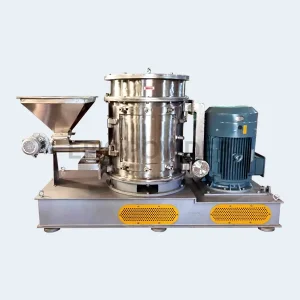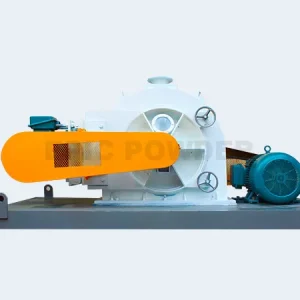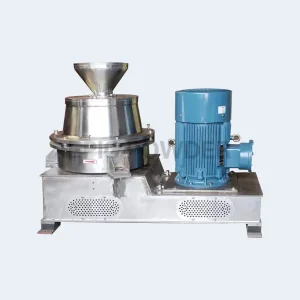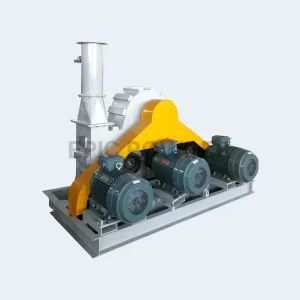Calcium carbonate’s modification mechanism has two types. One is chemical action, the other is physical action. Surface chemical effects, such as substitution, polymerization, grafting and hydrolysis of functional groups. The filler causes surface effects like adsorption, coating, and infiltration. These effects happen at the phase interface. When the filler is completely wetted, it causes physical adsorption. This happens on the high-energy surface of calcium carbonate. The energy there is higher than the plastic’s cohesive bonding strength.
Application of modified calcium carbonate in the field of polyvinyl chloride
Modified calcium carbonate particles are better than regular ones. They are evenly spread in their native state without clumps. They mix well with polyvinyl chloride resin, are easy to plasticize, and do not stick to rollers. They improve processing and the product’s strength and elongation. They also have good physical and mechanical properties.
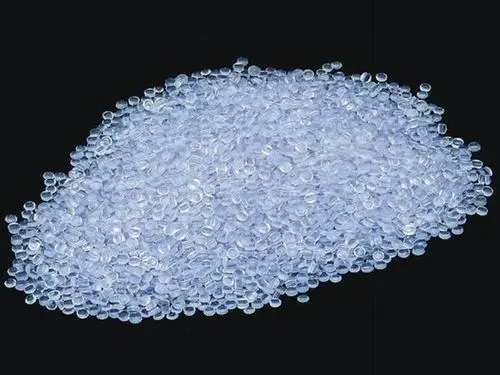
Application of modified calcium carbonate in polypropylene
Modifying light calcium carbonate’s surface with powder can cut the oil absorption to 22% and the contact angle to 68.6. The modified calcium carbonate fills polypropylene well. This can ease the drop in tensile strength somewhat. It lets the elongation at break and impact strength reach 28.47%. and 6.7kJ/m2.
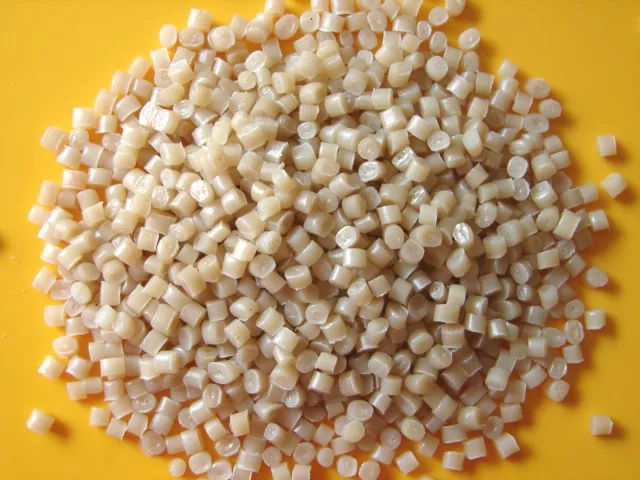
Application of modified calcium carbonate in high density polyethylene
Mechanical and chemical modification of heavy calcium carbonate with powder modifiers. The aluminate coupling agent bonds to the surface of calcium carbonate. It improves the dispersion of the modified particles a lot. More modified calcium carbonate in high-density polyethylene (HDPE) reduces wear and friction. It also boosts friction resistance. At a dosage of 8 parts, the material is best. The dosage increases tensile strength by 4.46% and impact strength by 24.57%.
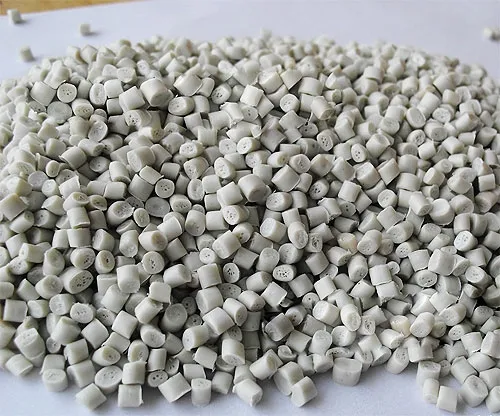
Application of modified calcium carbonate in low density polyethylene
The modified calcium carbonate has an activation index of 99.71%. Its oil absorption value is 46.19 ml/100 g. The final sedimentation volume is 2.3 ml/g. The viscosity of the mix of 10 g of the modified calcium carbonate and 100 ml of liquid paraffin is 4.4 Pas. Modified calcium carbonate is filled into low-density polyethylene (LDPE). When the calcium carbonate is 10% of the composite, it has good strength.
Application of modified calcium carbonate in ABS plastic field
After the surface is coated with powder. This improves the spread of nanometer calcium carbonate in organic media. The surface changes from liking water to liking fat. When used in ABS resin, it can improve its mechanical properties. These properties include impact, tensile, surface hardness, and bending strength. It also improves heat distortion and other thermal properties.
Application of modified calcium carbonate in polyester (PBAT)
After modifying the calcium carbonate surface, the filling amount of modified calcium carbonate can reach 50%. The composite product has good, strong properties. The PBAT resin coats the modified calcium carbonate particles. It does so without dissolving them. The particles are also completely infiltrated. This coating and infiltration improve the flow between the two.
Application of modified calcium carbonate in radiation cross-linked EPDM rubber
In-situ modification of calcium carbonate improves the dispersion of modified calcium carbonate. The modified calcium carbonate surface reacts with the EPDM rubber. This happens through the oleic acid group. It allows the calcium carbonate to join the EPDM rubber’s network. The tensile strength, 100% constant tensile stress, and Shore hardness of the composites are increased. This is due to the reinforcement of calcium carbonate in irradiated cross-linked EPDM rubber.
Application of modified calcium carbonate in polylactic acid
The surface of calcium carbonate is changed with a coupling agent. This increases the carbonate’s specific surface area and its contact area with the matrix. Stress creates more cracks and bends. It also absorbs a lot of energy. This toughens and strengthens the material.
Application of modified calcium carbonate in the field of PVC coated fabrics
Altered calcium carbonate can improve PVC paste resin’s compatibility. At the same dosage as heavy calcium, modified heavy calcium carbonate can get a lower viscosity. It also enhances bonding with the polyester base fabric and reduces the adhesive needed. It improves the feel of the coating material. When the dosage is increased by 40%, the modified heavy calcium carbonate has no bad effects. It does not harm the processing, physical properties, or thermal welding of the material.
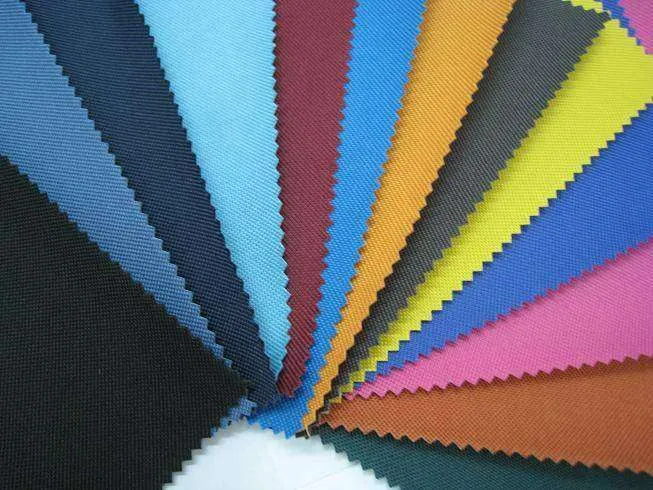
Application of modified calcium carbonate in the field of polyvinyl chloride firefighting pipes
Modified calcium carbonate particles are better than ordinary calcium carbonate. They are evenly distributed as primary particles without clumping. The middle of the particles is in the form of nanoparticles. Filling modified calcium carbonate into PVC fire-fighting pipes has two benefits. It can improve the system’s processing. It can also give the product better physical and mechanical properties for toughness and strength.
Application of modified calcium carbonate in polyvinyl chloride cable materials and flame retardant masterbatch
Heavy calcium carbonate is modified with aluminate, titanate coupling agent and stearic acid. They use heavy calcium carbonate filler to make polyvinyl chloride cable materials. They also use it to make flame retardant masterbatch. These materials have excellent performance. The use of heavy calcium carbonate will become one of the development trends in surface modification.
Application of modified calcium carbonate in the field of polyetheretherketone
Adding sulfonated hyperbranched polyaryl ether ketone to calcium carbonate whiskers can improve how well the whiskers spread in the mix. It enhances the interaction between the two phases and reduces material degradation. This happens within the processing temperature range. The melt viscosity decreased. This improved the Young’s modulus, flexural modulus, and toughness of the resulting composites.
Application of modified calcium carbonate in RTV one-component silicone rubber sealant
Surface modification of ultrafine calcium carbonate with silane coupling agent. Modified calcium carbonate strengthens sealants well. It has a tensile strength of 0.57 MPa and a maximum elongation of 159.60%.
Application of modified calcium carbonate in room temperature polyurethane sealant
Methyl methacrylate (MMA) and the silane coupling agent KH570 are used to copolymerize. They are also used to modify calcium carbonate. The water contact angle of modified calcium carbonate is 60, and the sedimentation value is 1.36 ml/g. Modified calcium carbonate disperses well in polyurethane. It shows thixotropy after being mixed with polyurethane. It is better than plain calcium carbonate. It improves the mechanical properties of polyurethane.
Application of modified calcium carbonate in the field of silicone rubber
Nano calcium carbonate can replace silica in silicone rubber to a certain extent. Silicone rubber is its main ingredient. Nanometer calcium carbonate is a filler and reinforcing agent for silicone rubber. It can greatly cut product costs and boost how the product processes. It also greatly improves rubber’s mechanical properties. These include tensile and tear strength. By controlling the crystal form, size, and surface treatment of nano-calcium carbonate, the product can gain thixotropy. It can also resist sagging.
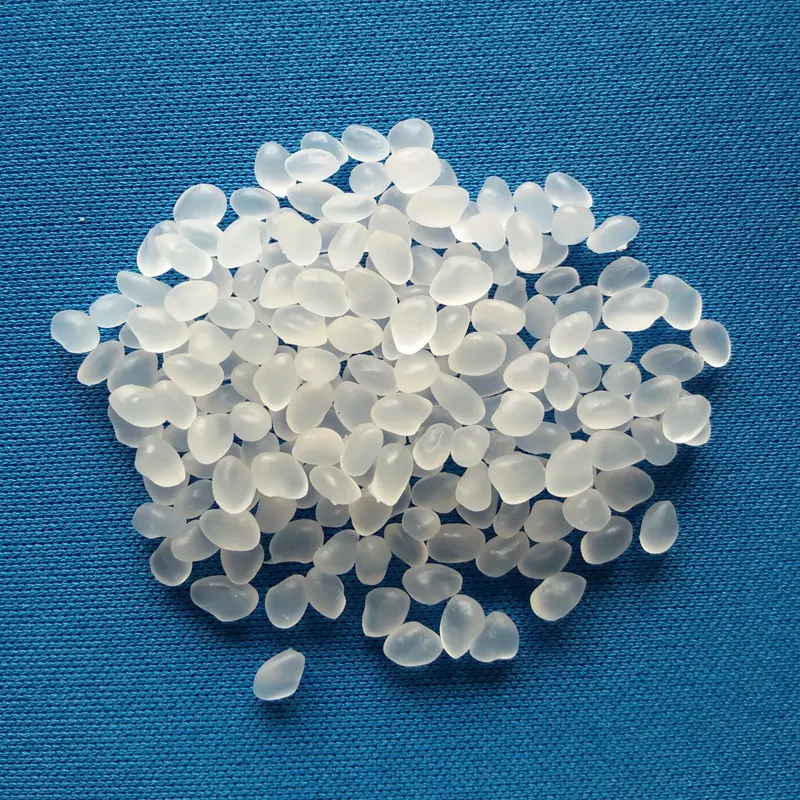
Application of modified calcium carbonate in natural rubber vulcanized rubber
Calcium carbonate is modified with resorcinol and hexamethylenetetramine. The modified rubber is much stiffer than the unmodified rubber. Rubber’s stretch, pull strength, and tear strength all increased a lot. They went up by 130%, 101%, and 70%. This was compared to plain calcium carbonate.
Application of modified calcium carbonate in styrene-butadiene rubber
CPB is used to strengthen styrene-butadiene rubber. This is done by modifying calcium carbonate. The rubber’s tensile strength is 60% higher than unmodified calcium carbonate. The stress it can handle is 70% increased. My strength increased by 30%.
Application of modified calcium carbonate in semi-trailers
Adding 40 parts of modified calcium carbonate to the semi-airtight layer can improve the rubber’s air tightness. It has little effect on the rubber’s bending resistance and processing. According to the tire factory test results, the 40 parts of modified calcium carbonate made the inner liner 30% more airtight. This is compared to the ordinary inner liner. Also, the cost is reduced by 3.65 yuan/kg. The tire’s high speed and durability are not affected.
Application of modified calcium carbonate in papermaking filler field
Starch-coated modified calcium carbonate is used as filler in papermaking. Processed calcium carbonate has strong shear resistance and a high retention rate. This makes the paper stronger and significantly slows the decline of its strength.
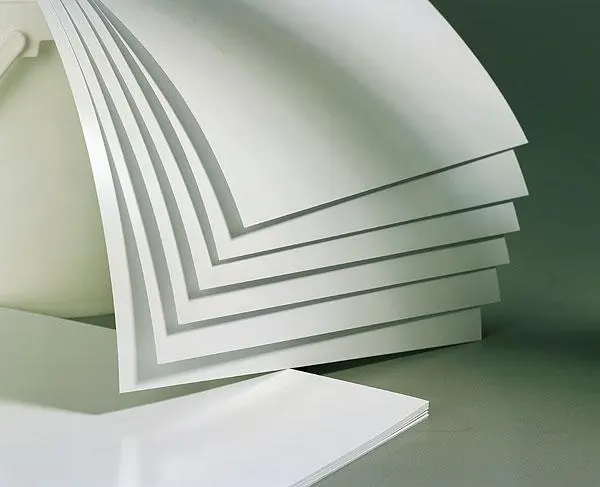
Application of modified calcium carbonate in the field of reconstituted tobacco leaves
Calcium carbonate is modified with sodium hexametaphosphate and citric acid (ratio: 133, 360 liters). Adding modified calcium carbonate to reconstituted tobacco leaves increases the ash content by 8.25%. This increase is compared to commercial calcium carbonate. Conventional smoke indicators and sensory evaluation results are better than commercial calcium carbonate.
Modified calcium carbonate is used in the field of powder coatings
Altered calcium carbonate is key in powder coatings. It makes the coating thicker and boosts its wear resistance and durability. In general, modified calcium carbonate costs more than other inorganic fillers. But, it cuts powder coating costs and raises the coating rate and spraying area.
Application of modified calcium carbonate in latex paint field
A latex coating with a polyvinyl chloride content of 43% was prepared using modified nanometer calcium carbonate. The coating is made of modified nano-calcium carbonate. It has a good surface finish and is compact. It resists stains, scrubbing, and aging. It has other greatly improved properties. Among them, nanometer calcium carbonate modified by stearic acid and sodium sulfonate has a big effect on tensile strength. Nanometer calcium carbonate modified by stearic acid and titanate has a big effect on stain and scrub resistance.
Modified calcium carbonate is used in the field of ink
The ink has modified calcium carbonate. It has good texture and viscosity. It prints well, dries fast, and has no side effects. The ink particles are small. This makes the ink show excellent dispersion, transparency, gloss, and hiding power. It also makes the ink absorb and dry fast. This results in fine prints with complete dots. This happened especially after resin binders became widely used in inks. Modified calcium carbonate has almost replaced other fillers. It did this due to its excellent stability.
Application of modified calcium carbonate in toothpaste field
Guangdong Lafang Personal Care Products Co., Ltd. It uses silica-coated, micron-sized, spherical particles to modify the surface of calcium carbonate. Calcium carbonate is a friction agent used in toothpaste. Adding modified calcium carbonate to toothpaste greatly improves its compatibility with fluoride. This is true even at the same wear value.
Surface modify calcium carbonate powder based on the surface modify mechanism. Consider the matrix, main formula, and tech needs of downstream organic polymer products. We can only do this by picking a good calcium carbonate surface modifier. We must also figure out the process and equipment for modifying the surface. Then, we can make good active calcium carbonate products.

